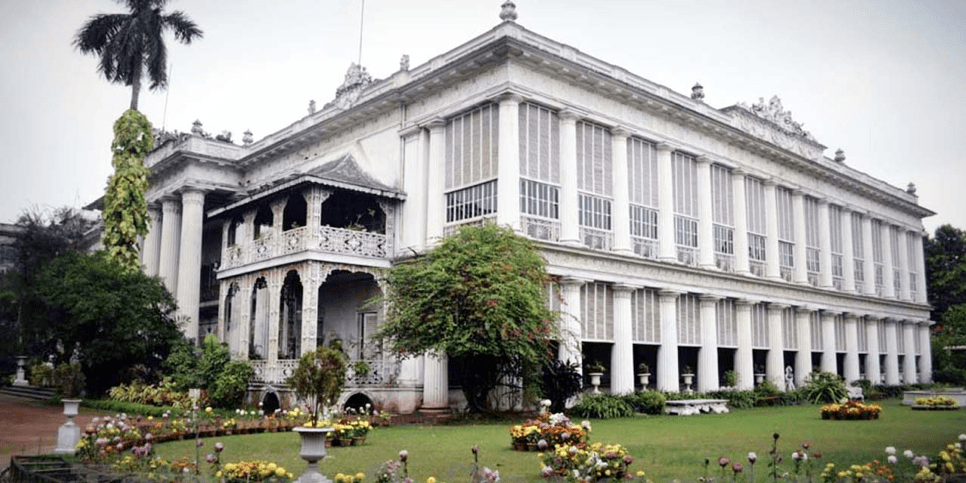
Marble Palace is a quirky palatial mansion representing the extravagance and grandeur of 19th century Kolkata. Named such by Lord Minto, this is Raja Rajendra Mullick’s palatial house built by him in 1835 where his descendents reside today. This Marble Palace is located at 46, Muktaram Babu Street, Chorbagan, North Kolkata. The Palace still is elegant and beautifully conserved.
Raja Rajendra Mullick was an affluent merchant and the adopted son of Nilmoni Mullick. He had a penchant for collecting exquisite works art from various places that he visited. The palace draws tourists from far and wide for seeing its architecture, vast collection of arts, sculptures, historic relics, furnishings and paintings of over 90 countries and a medley of Chinese and Japanese porcelain, as well as collection of around eighty antique clocks. There is also a beautiful garden with a rock garden, lawn, a lake and a small private zoo on the premises.
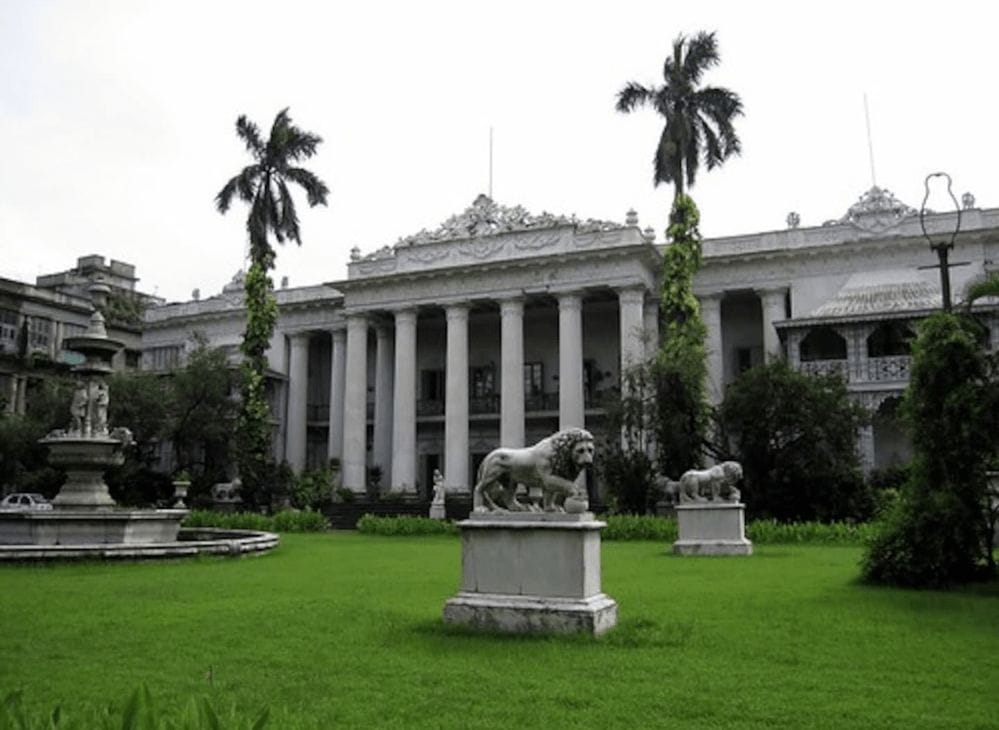
Architectural Elegance
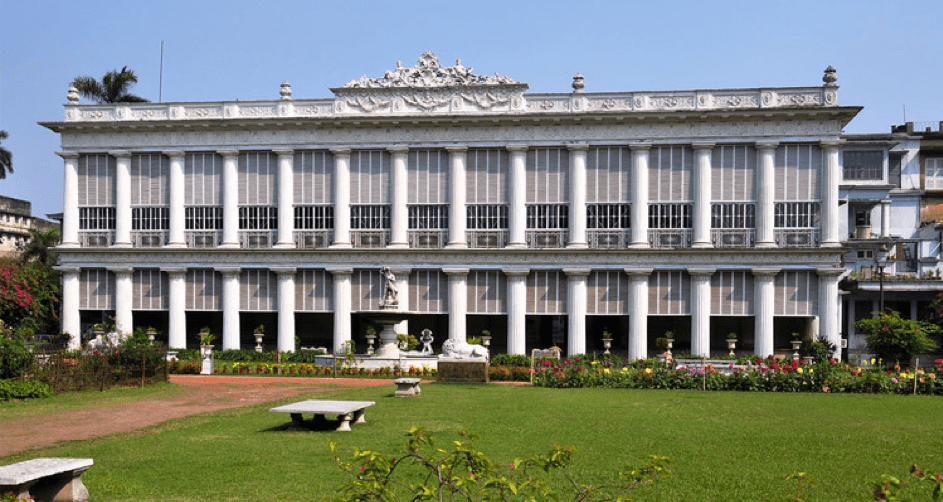
The Marble Palace Mansion is an architectural masterpiece, built in Neoclassical style with tall fluted Corinthian columns, ornamented balconies and veranda, sloping roofs and fretwork drawing influence from the Chinese elements and bas reliefs which opens into courtyards – which are largely traditional Bengali in style.
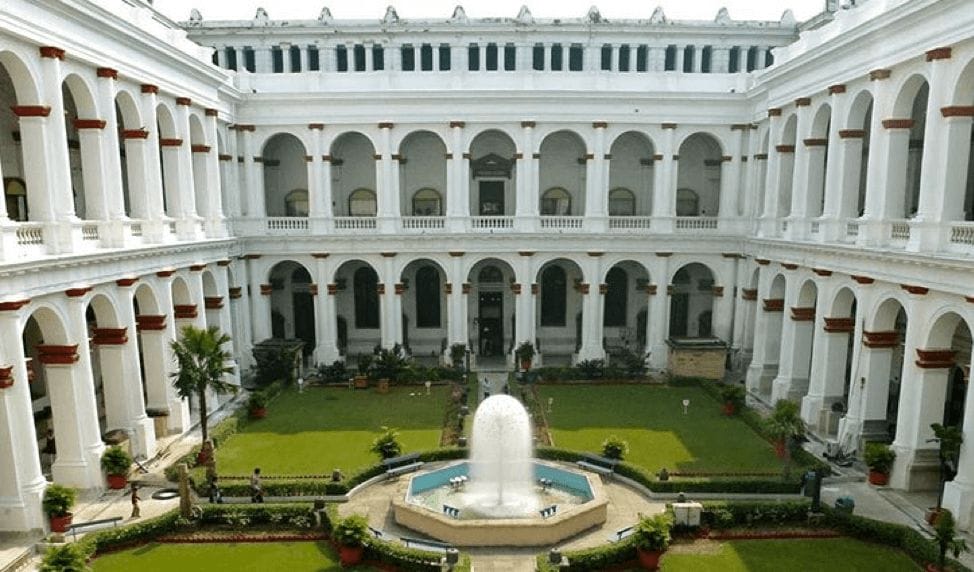
Close by the courtyard, there exists an old Jagannath temple built by Nilmoni Mullick, which predates the house. This is called Thakur-Dalan where only the members of Mullick family can worship.
The palace is three-stories masterpiece, divided into – Meeting Hall, Painting Room, Sculpture room, Billiards Room and Thakur Dalan (place of worship) with intricate carvings on the marble pillars, flooring and walls clad with superior quality Italian marble giving the entire structure magnificence and its name. The mansion is built with about 126 different varieties of marbles transported across the seas.
The broad wooden stairs leading into the mansion are not used by visitors but there are paintings hanging from the walls, such as Marine View by Van Goyan, Guercino’s Venus and Adonis, Sassoferato’s Madonna and Child, and some others by Ravi Varma with noteworthy ornate and gold-polished frames.
It is only through a side entrance that visitors enter straight into the Billiard Room, which has two billiard tables in the centre with statues and vases lining the sides of the walls. These are sculptures of Apollo, Faun and Flora amongst others- but the incredible Japanese bronze vase placed near one of the doorways grabs the attention.
The next room is dedicated to Queen Victoria, having her larger-than-life wooden statue craved out of a single tree trunk in the centre. A bronze bust of the Queen is also in this room, along with Medusa’s, the wooden ceiling is intricately carved and has a huge chandelier hanging from it, and in the corner a gramophone record player is kept covered.
This room leads into the ‘jalsha-ghar’ (music room) where one gets to view the Raja’s collection of elaborate candle stands- carved out of marble and Belgian glass. The floor is laid with a calico effect having multicolored marble inlay on a giant scale. There is piano near the window. Statues of Napoleon Bonaparte and Wellington, along with other statues of men and women representing Autumn and Spring, Agriculture and Commerce, Summer and Winter, and finally, Dawn and Night from Greek and Roman mythology kept on the opposite sides of the room. Painting of Venus de Medici and Venus with Cupid hang at the back of the room.
The first room to the left in the courtyard is the Meeting Room, which houses art works, silver show-pieces, huge chandeliers, and Belgian glass mirrors. The next room being the ‘nach-mahal’, with carpeted flooring and seating arrangements on both sides of the room, chandeliers hang from the roof.
The corridor
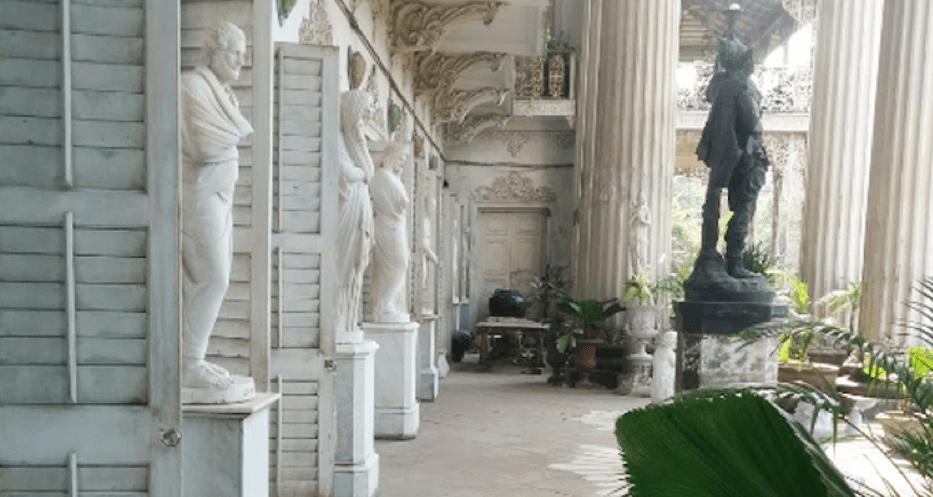
The massive corridors are lined with chandeliers, Victorian furniture, vases, paintings, marble and wooden sculptures of exotic birds (Red Rosella and Eastern Rosella from Australia, and the Sun Conour from South America), along with a bust of George Washington, of Satyrs and a series of paintings depicting scenes from the Old Testament. Near the doorway find a remarkably intricate designed huge brass hookah.
The next step into the Painting Room, where one can spot an array of originals from several painters including ‘The Marriage of St. Catherine and Amazon’s War painted by Ruben; The Infant Hercules Strangling the Serpent, and Venus and Cupid by Joshua Reynold; The Martyrdom of St. Sebastian Sir by Murillo and Shower of Gold by John Opie; amongst others like Indian artist – Raja Ravi Varma, the Dutch painter – Jan Van Goyen, Giovanni Battista Salvi da Sassoferrato. In one corner of the room stands an impressive (and still functional) grandfather clock stands dwarfed by the vast canvases. There are 76 rare artworks brought in 1830 all the way from Italy and Belgium collected over the past 180 years. Raja Rajendra Mullick was given these objects of art as gifts, this is the main reason one sees elements from Greek, Roman and Indian mythology mixing with Biblical figures, sculptures of little orphaned girls and fisherwomen.
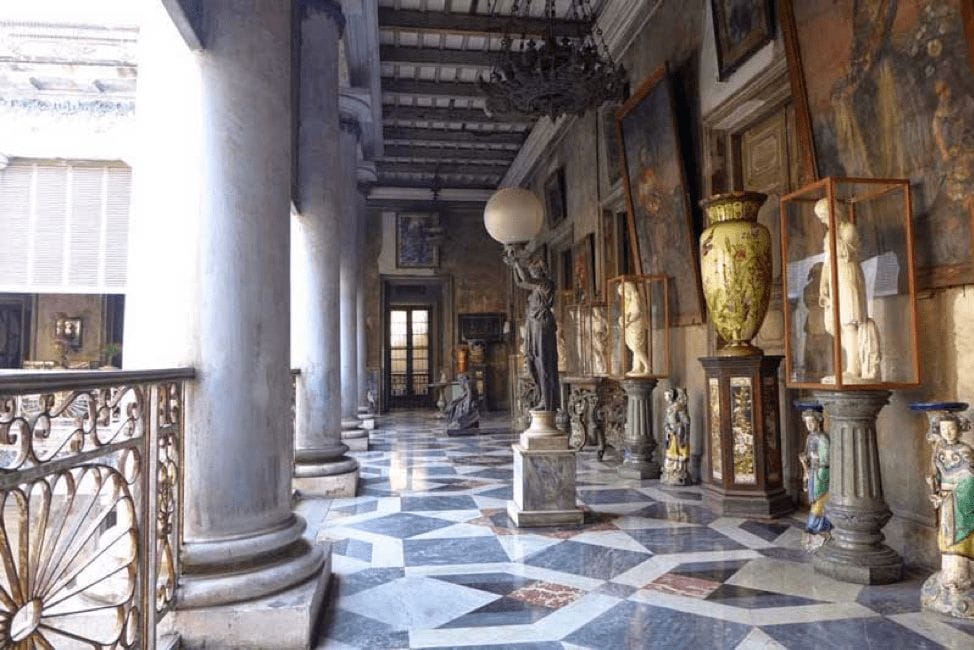
It is almost like stepping back in time to the Victorian era in the midst of the décor and art collection. The Victorian furniture, Belgian glassware, game trophies, fine paintings, massive Japanese bronze vase, full length Belgian glass mirrors adorning the walls add to the ambience of the place.
The Impressive Lawns
The mansion is surrounded by sprawling lawns with statues of Hindu Gods, Jesus Christ, The Virgin Mary, Lord Buddha, the great explorer Christopher Columbus. There is near the entrance a small statue of Raja Rajendra Mullick himself.
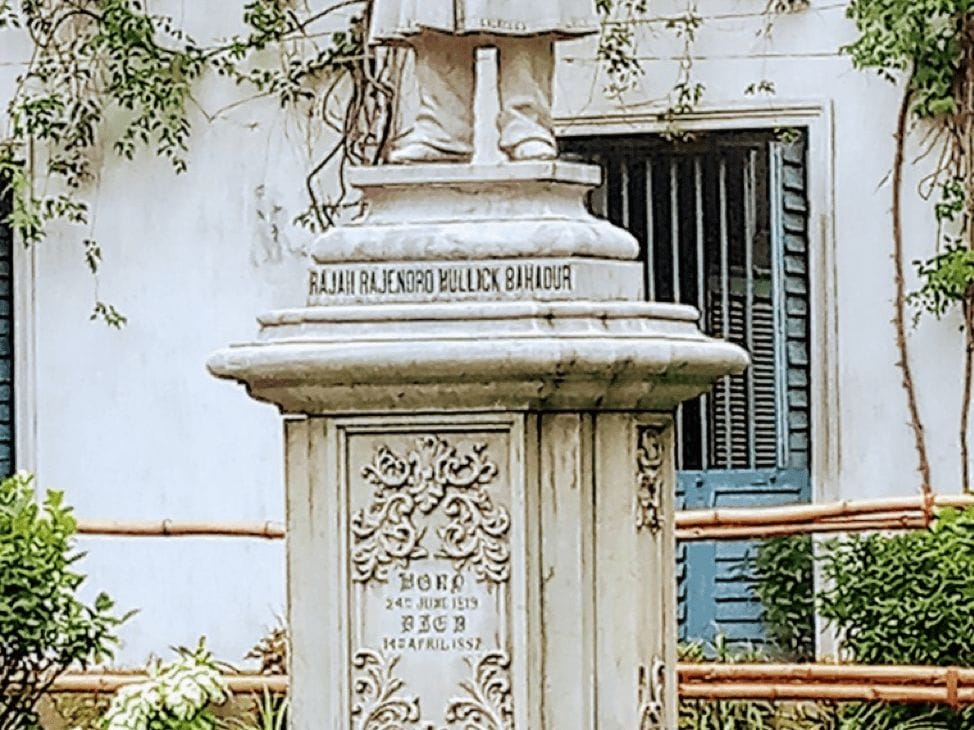

You will see scattered all over the grounds figures of lions, some keeping vigil and while others are fast asleep.
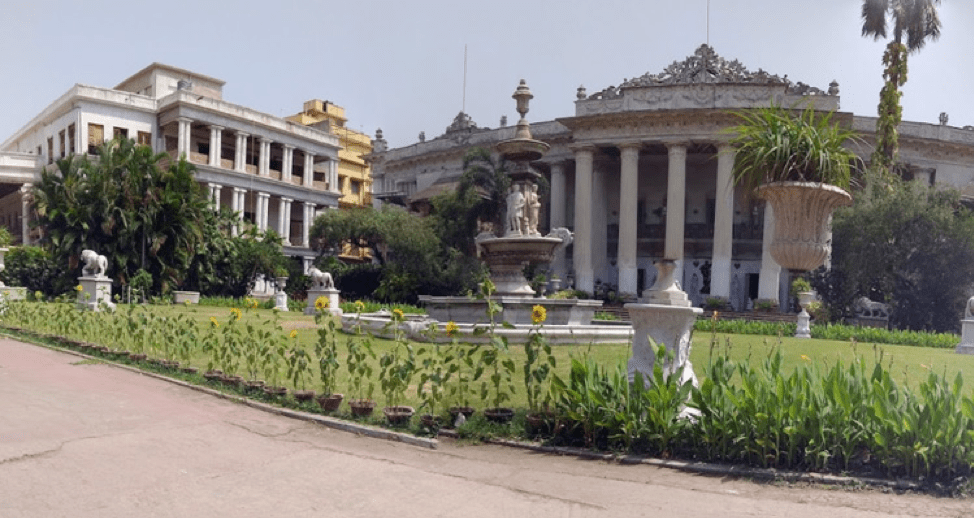
There are seating arrangements all across the lawn, along with tables having an impressive marble table-top. It also has marble fountains and a dramatic statue of ‘Leda and the Swan.’ featuring mermen and mermaids.
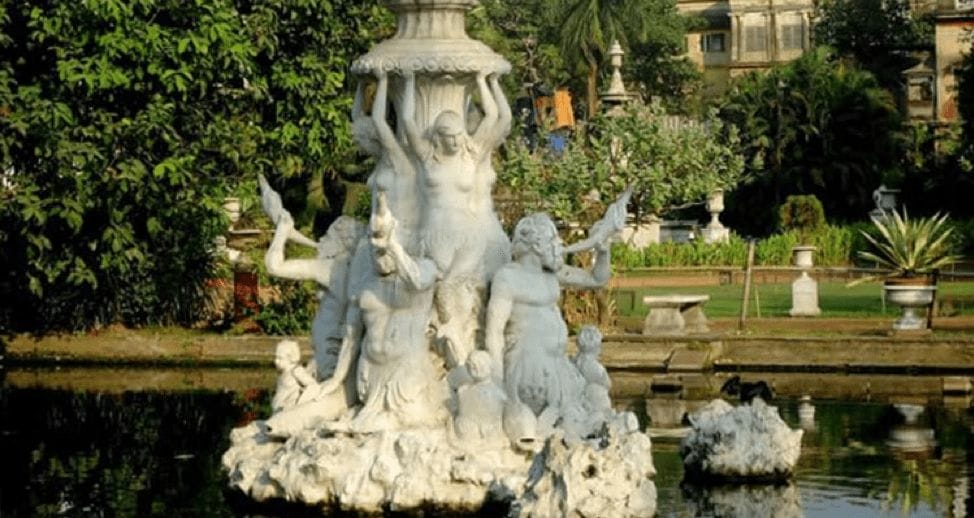
Timings and Entry Fee of Marble Palace Mansion Kolkata
This is one of the most popular tourist attractions and in order to visit the Marble Palace one must obtain permit in advance from the West Bengal Tourism Information Bureau at BBD Bag, Kolkata. There is no entry fee. The visitors are given an escorted tour by a guide (except Mondays and Thursdays) from 10am to 4pm; valuable inputs about artwork exhibited and objects is provided. Photography is not permitted inside the mansion as the place is private property.
How to Reach Marble Palace Mansion
The best mode of transport would be by metro as the nearest metro station is Girish Park Metro Station. It will take you 5 minutes to walk to Marble Palace and is at the end of a street, all you have to do os ask around and the locals are bound to point you in the correct direction. Or you can take Ola, Uber cab, or hire yellow taxis or book a private cab in Kolkata.





















